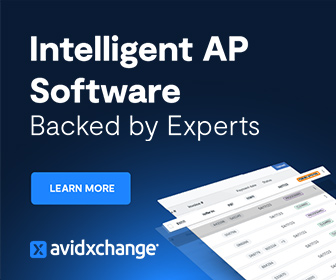Since they were created in 1993, SPACs gained raving popularity in the wake of the new decade as they made record-setting capital acquisitions. In 2020, SPACs raised $83.4 from initial public offerings (IPOs). Strikingly, they raised over $95.7 in the first quarter of 2021 alone.
There’s little wonder why these SPACs grew so popular. With the uncertainties clouding traditional IPOs, private companies are turning to a faster and more predictable route to the public markets. As a privately held company controller (or CFO) considering public listing through SPACs, this article contains all there is to know about this growing listing process.
What are SPACs?
Special Purpose Acquisition Companies (SPACs), commonly referred to as ‘blank check’ companies, are publicly listed investment vehicles that acquire (or merge with) private companies (target companies) to have the target companies’ shares issued publicly.
These SPACs are first listed publicly through a traditional IPO. Since they have no financial history, listing requirements are significantly simpler for ‘blank check’ companies. 100% of capital raised from investors during its IPO is kept in a trust and used to acquire target companies.
However, these SPACs must find and close an acquisition/merger deal within two years of formation. Founders and management of SPACs are prohibited from receiving salaries or any form of compensation until they close a deal. Not meeting this requirement will result in de-listing and closure of the SPAC and every penny of raised capital is returned to investors accordingly.
Benefits and Challenges of using a SPAC to go public
Although an understanding of how SPACs operate is important, controllers should be more concerned about how it affects their business. When considering a SPAC route to the open market, try to weigh the following challenges against benefits.
Challenges of using a SPAC
- Unlike traditional IPOs where private companies may have up to 12 months to prepare for listing by working around the clock to meet SEC regulations, SPACs mergers are facilitated in an average of 3 months. For this, the management of the target company has to do a lot in meeting regulations in a very limited time. This can be nerve-racking for controllers.
- Target companies face a risk of not getting funded after investing resources in the paperwork before acquisition/ merger. This happens when the SPAC shareholders disapprove of the merger or, in most cases, redeem their share of the money locked up in the trust. When this happens, target companies are left with losses incurred during the preparation process.
Benefits of going public through a SPAC
According to SPAC Research, over 116 SPACs announced deals in the Q1 of 2021 despite the risks involved. Surely, private companies find them attractive for the benefits they bring. Some of these benefits are described briefly.
- During traditional IPOs, the valuation of a listing company is significantly determined by market sentiment and industry trends. This presents a terrible risk of devaluation as the company stock hits the trading floor. Listing through a SPAC, on the other hand, alleviates this risk posed by unpredictable market volatility. The SPAC pays the target company a fair market value for their shares with the money locked up in the trust. This amount is agreed upon during the acquisition/merger negotiations. However, SPAC investors have considerable influence on the process. If they think that the company is being overvalued, they might not approve of the acquisition/merger.
- Secondly, traditional IPOs preparations can take several months or over a year. Private companies pour millions of dollars into preparation and seeking the right time to enter the public market. As the impatient fingers of time travel, market trends and sentiments shift away from favorable. This could force these private companies to halt IPO and all the invested resources are washed down the expense sink. Walking through the SPAC door drops the preparation period to 3-5 months. Now, targets can go public when the timing is still right and avoid the risks from market volatility.
- Thirdly, SPAC investors and management are often equipped with profound industry experience and can serve as very competent board members or advisors to that target company as they tread ‘public waters’.
How to prepare for a SPAC merger or acquisition
After weighing risks against benefits and still consider using a SPAC, you need to prepare for the process. You would be better off keeping the following checklist in mind to help you make the right decisions.
- Set clear goals for the transaction
The major purpose of a SPAC merger is to raise growth capital. So, when pursuing one, ensure to lay out clear plans for the incoming capital. Are you trying to expand your market reach, offer new products or revamp existing to an existing market, or exploit a new market? Whatever your goals for wanting to raise capital through a SPAC merger must be set and understood by both management teams (target company and SPAC)
- Evaluate the SPAC
Promising companies will get several SPACs’ attention. Whether you’re approached by a dozen SPACs or one, do the diligence of evaluating each of them. Confirm whether they are acting under pressure. Fast approaching deadlines for SPACs can lead to frustration from investors trying to redeem their assets from the trust account.
Also, find out whether they have enough capital to pay fair market value for your company. The right target company should be worth more than 80% of the SPAC’s trust value (investors’ money held in a trust account).
Furthermore, find out who the major investors in the SPAC are. If nothing, you should know the people acquiring significant stakes in your company. Do they have useful industry experience? Will they make for a sound board? You’re relinquishing some control over your company and it’s important to know those you’re getting in business with.
- Prepare the PIPE
During the negotiation between a SPAC and the target company, usually, they plan to raise funds by issuing some of the post-merger (or de-SPAC) shares to investors as private investment in public equity (PIPE). These private investors help increase the valuation of the De-SPAC (the merged company). So doing, the public company would be valued more than the initial amount in the trust account. And then, open to the public markets. As a controller, you need to figure out a way to prepare for this extra investment and understand how it would affect the shares of key persons.
- Audit your books
Going through a purported backdoor to the public market doesn’t spare you from the rigors of keeping your records audited. According to the Public Company Accounting Oversight Board standards, private companies must present an audited report of their financials in the last two years. So, ensure that your books are audited accordingly beforehand.
Conclusion
With SPACs gaining so much attention recently, many private company controllers or CFO are seizing the opportunity to raise growth capital and get their feet in the public market. However, this blank check opportunity comes with risks and benefits that target companies should be aware of. Armed with clear knowledge of these risks and rewards, you have to prepare adequately for the rapid public listing process with a choice of SPAC and growth capital goals in mind.
Looking to learn more the SPACs? Controllers Council is a national community and platform of Controllers, Accounting and Finance professionals focused on accounting best practices, information and resources, recognition and networking. Membership has many features and benefits to propel your career and expertise, and to be an active participant in our exciting community. Discuss topics like the SPACs and more in our forum. Become a member today.
Additional Resources
Startup Benchmarking: How Is COVID Impacting the Growth Stage?
Path to IPO: Could Pre-IPO Company Controllers Benefit from a Part Time Chief?
From Startup to IPO: The First Steps to Manage the First Funding Rounds




